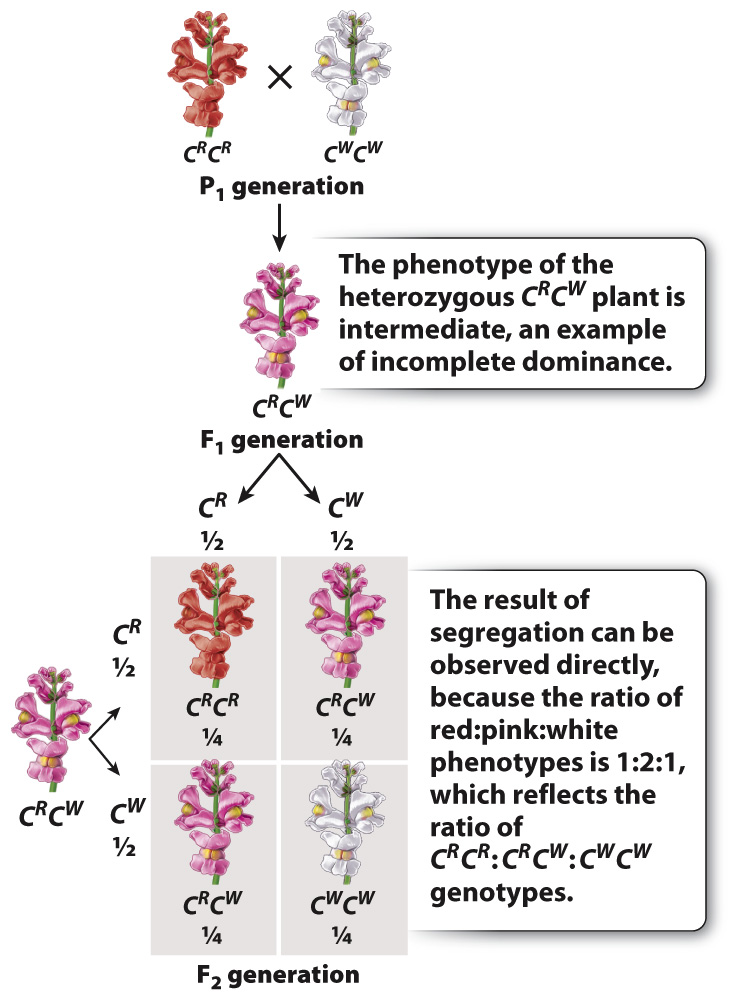Dominance is not universally observed.

Many traits do not show complete dominance such as Mendel observed with pea plants. Most traits we see are determined by multiple genes or the interaction of genotype and the environment and so do not display the expected 3:1 ratio of phenotypes. But even among traits that are determined by a single gene, the 3:1 phenotype ratio is not always observed. In some cases, the trait shows incomplete dominance, in which the phenotype of the heterozygous genotype is intermediate between those of the homozygous genotypes. In such cases, the result of segregation can be observed directly because each genotype has a distinct phenotype. An example is flower color in the snapdragon (Antirrhinum majus), in which the homozygous genotypes have red (CRCR) or white (CWCW) flowers, and the heterozygous genotype CRCW has pink flowers (Fig. 16.10). In notating incomplete dominance, we use superscripts to indicate the alleles, rather than upper-
333
Note that in this case the genotype ratio and the phenotype ratio are both 1:2:1, since each genotype has a distinct phenotype. Such a direct demonstration of segregation makes one wonder whether Mendel’s work might have been appreciated more readily if his traits had shown incomplete dominance!